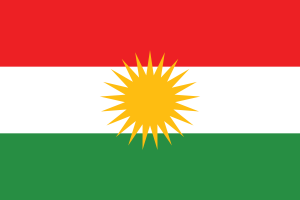Language/Central-kurdish/Grammar/Gender
Hi Central Kurdish learners! 😊
In this lesson, we will explore gender in Central Kurdish grammar. Understanding gender is crucial to master a language because it affects the formation of words, sentences and even the pronunciation of the words. As you might know, Central Kurdish is an Indo-European language spoken by the Kurds in the west of Iran, north-east of Iraq, north-west of Syria, and southeast of Turkey. If you want to improve your language skills, you can also use the Polyglot Club website to find native speakers and ask them any questions!
What is Gender in Central Kurdish?[edit | edit source]
Gender in Central Kurdish (or any language for that matter) refers to whether a noun is considered masculine, feminine, or neuter. In Central Kurdish, gender affects the noun suffix and consequently changes the meaning of the word. Understanding gender is essential because it affects not only the nouns but also the adjectives, articles, and even verbs in a sentence.
Masculine Gender[edit | edit source]
Masculine gender is used for male beings, and for inanimate objects that are grammatically masculine. To recognize whether a noun is masculine, you can look for the following suffixes at the end of the word: -ak, -ik, -ên, -î, -an, or no suffix at all. Here are some examples of masculine nouns:
| Central Kurdish | Pronunciation | English |
|---|---|---|
| بایگان | baygân | suitcase |
| بابکه | babké | baby |
| پسپاڵ | pêspal | soldier |
| کتێب | kitêb | book |
Dialogue:
- Person 1: ئەو پسپاڵە کییا؟ (who is that soldier?)
- Person 2: ئەو پسپاڵ دیکی دیاری دا. (That soldier is a brave man.)
Feminine Gender[edit | edit source]
Feminine gender is used for female beings, and for inanimate objects that are grammatically feminine. In Central Kurdish, feminine nouns usually end with the suffix -a, -ê, -in or -e. Here are some examples of feminine nouns:
| Central Kurdish | Pronunciation | English |
|---|---|---|
| مامۆستا | mamosta | teacher (female) |
| خۆشک | xoşk | peach |
| گولە | golé | flower |
| بشکەر | beşker | watch |
Dialogue:
- Person 1: ڕاستەوخۆ مامۆستا هەڵدەستێت؟ (Is the teacher honest?)
- Person 2: بەجێ هەڵدەستێت. Mamosta bêjî heldeste. (She is very honest.)
Neuter Gender[edit | edit source]
Neuter gender is used for objects that have no gender or do not fall into the masculine or feminine category. Neuter nouns in Central Kurdish usually end with the suffix -i or -in. Here are some examples of neuter nouns:
| Central Kurdish | Pronunciation | English |
|---|---|---|
| شۆڤباز | şovbaz | plane |
| حیوانات | hiwanat | animal |
| مەسرەت | mesret | joy |
| شوو | shû | juice |
Dialogue:
- Person 1: ئەو مەسرەتی کییا؟ (What is that joy?)
- Person 2: ئەو مەسرەتی دەربچی نەکەمی چەپکرا. (That joy was the first goal of the left team.)
Conclusion[edit | edit source]
Understanding gender in Central Kurdish grammar is not only essential to create meaningful sentences but also to communicate effectively. Gender affects not only nouns but also adjectives, articles, and even verbs in a sentence. To get more practice in Central Kurdish, you can explore the Kurdish [1] in the Polyglot Club website or ask native speakers any [2] you might have.
Sources[edit | edit source]
Well done on mastering this lesson! Don't miss these related pages to expand your knowledge: Pronouns & Common Prepositions.

